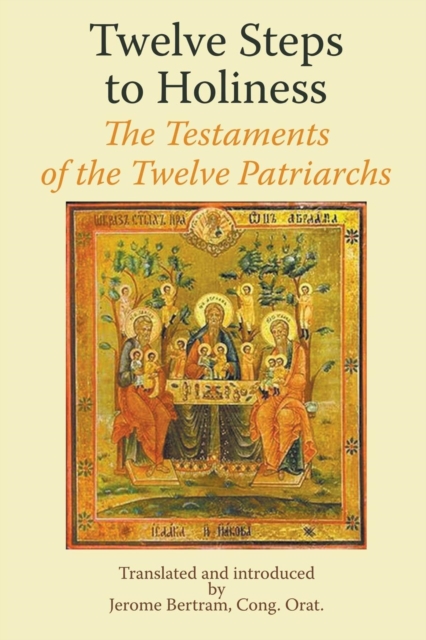CITESTE MAI MULT
Detalii
Descriere RO
Many writers on the spiritual life have used the analogy of climbing a ladder, as we progress towards that degree of perfection which Our Lord demands of us, 'Be ye perfect, as your heavenly Father is perfect' (Matthew 5:48). It must originate in the story of Jacob's Ladder, on which he saw the angels ascending and descending --and since humility is the key to all virtue, who is to say whether we should be trying to go up, or to go down.
St Benedict is the most familiar of those writers who speak of the Ladder of Humility (chapter 7 of his Rule). There are twelve steps, and that at once makes us look out for other things that go in sets of twelve. There are twelve Apostles, of course, and they respond to the twelve Tribes of Israel. There are twelve Minor Prophets. In St Paul there are twelve Fruits of the Holy Spirit, and in the earliest Christian writings after the New Testament itself, we find the Shepherd of Hermas, which speaks of twelve virgins, who are virtues, opposed to twelve women who are vices. Another very important document from this period, which has been strangely neglected, is the Testaments of the Twelve Patriarchs, which again looks at twelve virtues and their opposites.
The Testaments of the Twelve Patriarchs are worth reading, as the text seems to be the very first systematic Christian treatise on moral theology: the twelve Patriarchs each discourse about some aspect of virtue or vice. It is written in the form of 'Testaments' or last speeches by the twelve sons of Jacob, addressed to their family gathered around them, each on his deathbed, on the model of the Biblical testament of Jacob. Written in Greek, and dated to the very end of the first century, it is seen as a Christian work, using the literary form of a pseudepigraphon (a device by which the real author attributes his writing to authoritative figures from the past to give it greater significance). Some earlier scholars thought it to be a Jewish text, but with a few Christian interpolations; if it really is a pre-Christian work, we would have to place it among St Paul's favourite books, for he seems to quote it many times.
In fact, whether the Testaments of the Twelve Patriarchs is a late Jewish book which only survives in an early Christian edition, or a new composition by an early Christian drawing on Jewish predecessors, matters not a jot. The fact that early Christians edited it or wrote it, and certainly read it, is very significant. It is an important witness to the Early Church, it shows what the second or third generation of Christians thought and believed about the path to virtue, and acts as a guide to the contemporary Christian today.
EdituraGracewing
Dimensiuni229 x 154 x 18
Data Publicarii31/10/2018
Format
Numar pagini244
Aceasta este o carte in limba engleza. Descrierea cartii (tradusa din engleza cu Google Translate) este in limba romana din motive legale.
Multi scriitori despre viata spirituala au folosit analogia de a urca pe o scara, pe masura ce progresam catre acel grad de perfectiune pe care Domnul nostru ni-l cere: „Fiiti desavarsiti, asa cum Tatal vostru ceresc este desavarsit” (Matei 5:48). Trebuie sa aiba originea in povestea Scarii lui Iacov, pe care a vazut ingerii urcand si coborand - si din moment ce smerenia este cheia tuturor virtutilor, cine trebuie sa spuna daca ar trebui sa incercam sa urcam sau sa coboram.

